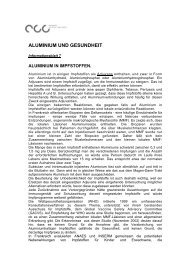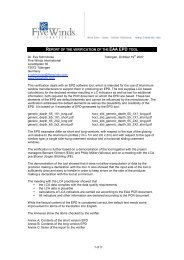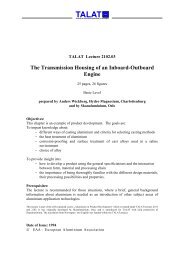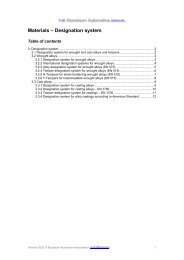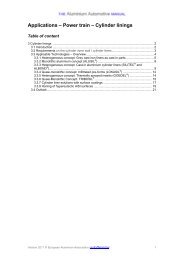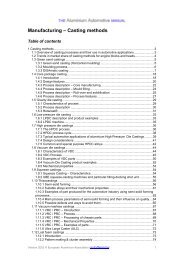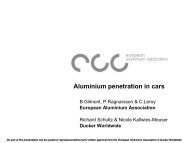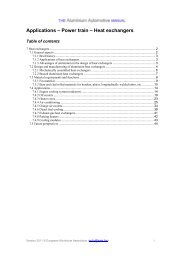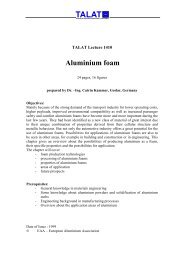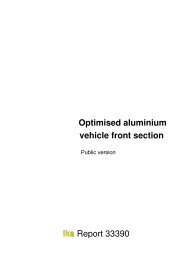Report 106310 Concept Design of a Crash Management System for ...
Report 106310 Concept Design of a Crash Management System for ...
Report 106310 Concept Design of a Crash Management System for ...
You also want an ePaper? Increase the reach of your titles
YUMPU automatically turns print PDFs into web optimized ePapers that Google loves.
3 <strong>Crash</strong> <strong>Management</strong> <strong>System</strong> 9<br />
1000 mm<br />
540 mm<br />
64 km/h<br />
Fig. 3-2: Setup <strong>of</strong> Euro NCAP crash test [CAR11]<br />
Fig. 3-3: Evaluation points on a dummy [CAR11]<br />
40 % overlap = 40 % <strong>of</strong> the width <strong>of</strong> the widest<br />
part <strong>of</strong> the car (not including wing mirrors)<br />
Head: acceleration and HIC<br />
(Head Impact Criterion)<br />
Neck: <strong>for</strong>ces<br />
Thorax: depression<br />
Upper leg: <strong>for</strong>ces<br />
Knee: displacement<br />
Lower leg: <strong>for</strong>ces<br />
Foot: displacement (brake pedal)<br />
The recorded values on the dummy also depend on restraining system like seat belts and<br />
airbags. These influences should be investigated separately in connection with the<br />
development <strong>of</strong> car safety systems and are not considered <strong>for</strong> the design <strong>of</strong> a truck crash<br />
management system. Hence the limiting values from Euro NCAP cannot be used and so, the<br />
car related values are required.<br />
Such car related values are used in the ULSAB Project. They are listed in Fig. 3-4. Only<br />
intrusions and displacements are considered in these values. For a complete evaluation <strong>of</strong><br />
the accident severity, the occurring accelerations also need to be considered.



